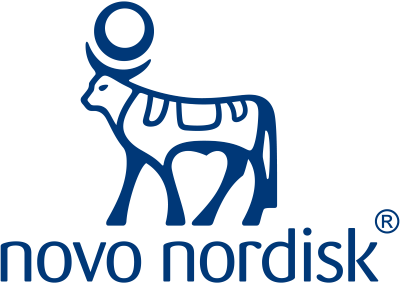Pipeline & Programs
& Programs
& Programs
Peripherally-acting CB1 Inverse Agonists Pipeline
| Molecule | Indication | Preclinical | Phase 1 | Phase 2 | Phase 3 |
|---|---|---|---|---|---|
| INV-202 (Metabolic) |
Diabetic Kidney Disease* |
|
|||
| INV-202 (Metabolic) |
Obesity |
|
|||
| INV-347 (Next generation) |
Multiple |
|
|||
| INV-300 SERIES (Next generation) |
Multiple |
|
|||
| INV-101 (Anti-fibrotic) |
Idiopathic Pulmonary Fibrosis |
|
|||
Viewing tip: for a better user experience, hold your phone horizontally D: Delivery P: Preclinical P1: Phase 1 P2: Phase 2 P3: Phase 3
* including other metabolic disorders: Non-Alcoholic Steatohepatitis (NASH), Obesity, Type 1 and Type 2 Diabetes, Cardiometabolic disease, Hypertriglyceridemia (HTG).
INV-202
INV-202 (monlunabant) is a potential first-in-class small molecule CB1 receptor (CB1r) blocker being developed for the treatment of metabolic disorders. It is specifically designed to preferentially block CB1 receptors in peripheral tissues such as the kidneys, gastro-intestinal tract, liver, pancreas, adipose tissues, muscles, and lungs. The therapeutic effects of a peripheral CB1r blockade in a range of cardiometabolic and fibrotic diseases are well-documented, paving the way for potential treatment of a large number of patients with current unmet needs. In a first-in-human study examining the safety and tolerability, oral absorption, and pharmacokinetics of INV-202, results supported rapid progression into a phase 2 study. It also demonstrated potential for decreased appetite—a relevant pharmacodynamic marker of early efficacy of Inversago’s lead program.
As a complication of type 1 and type 2 diabetes, DKD affects approximately 1 in 3 people living with diabetes in the United States. Poorly controlled diabetes causes DKD, leading to chronic kidney disease and requiring either dialysis or transplant in late stage. No cure exists for this indication and available medications only help slowing the progression of the disease and control related complications.
Overactivity of peripheral CB1 receptors plays a key role in DKD and research in preclinical models has shown that the inhibition of CB1r signaling has the potential to significantly reduce the progressive impairment of kidney function.
Inversago believes that the development of peripherally-acting CB1r blockers represents a promising therapeutic avenue for metabolic disorders. We believe that by leveraging the benefit of a potentially safe and more potent peripheral CB1r blockade it may be possible to address a significant unmet medical need affecting a growing number of patients globally. Based on positive results obtained in a Phase 1b, Inversago has initiated an additional phase 2 trial in subjects with obesity. Both phase 2 studies are expected to complete in the second half of 2025.
INV-300 Series and INV-347
The INV-300 series is Inversago’s next generation of CB1r blockers based on the company’s growing knowledge of blocker biology such as advanced G-Protein Coupled Receptor (GPCR) biology and β-arrestin biased signaling. These next generation candidates are designed to maximize potency and safety.
INV-347, an oral, small molecule CB1r blocker, is currently assessed in a phase 1 trial to investigate its safety, tolerability and pharmacokinetics.
INV-101
INV-101 (zevaquenabant) is a small molecule, peripherally acting CB1r blocker being developed for the treatment of idiopathic pulmonary fibrosis (IPF), including progressive fibrosis interstitial lung diseases (e.g.: systemic sclerosis, Hermansky-Pudlak Syndrome). Fibrosis is when an excessive deposition of extracellular matrix components interferes with normal organ function. IPF is when the underlying cause of the fibrosis is unclear. In the lung, fibrosis interferes with normal gas exchange and reduces lung volumes, leading to shortness of breath. Patients with progressive lung fibrosis typically have a poor prognosis with a median life expectancy of only 2.5–3.5 years after diagnosis. As such, there is a high unmet need for anti-fibrotic therapies that slow progression of fibrosis. Recent studies show that CB1 receptors are upregulated in the lungs of patients with pulmonary fibrosis.
Nonclinical studies in animal and human tissues show CB1 receptors are upregulated in fibrotic tissues, whilst CB1r blockers reduce or slow the progression of fibrosis.
Other Possible Indications
Inversago believes that appropriate peripheral CB1r blockade has potential in multiple disease areas including diabetes, non-alcoholic steatohepatitis (NASH), and fibrotic disorders. In diabetes, CB1 receptor blockade may increase insulin production by protecting beta-cells in the pancreas and help manage insulin resistance in other tissues. In NASH, clinical study results demonstrate a broad effect through multiple pathways downstream of the CB1 receptor. In pulmonary fibrosis, recent studies indicate that CB1 receptors are unregulated in the lungs of these patients and in nonclinical study models, blocking the CB1 receptor slows the progression of IPF. Similarly, CB1r blockade results in reductions in fibrosis in other organs, including the liver, kidneys, and skin.


